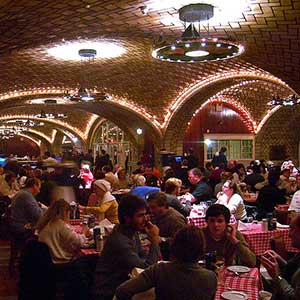
A man found a pea-size natural pearl in an oyster he ate the Grand Central Oyster Bar in New York City, according to a story in the New York Post.
The Edgewater, N.J., man told the newspaper was eating a stew-like dish that included six Blue Point oysters. When he felt the smooth object rolling around in his mouth, he worried that it was a loose tooth or filling.
But when spit it out, he realized it was something more. After confirming it was a pearl, he reported it to the restaurant, which, it turned out, was just as surprised.
“I’ve been here 28 years,” executive chef Sandy Ingber told the Post. “This is only the second time I’ve seen this happen. And we sell over 5,000 oysters on the half shell every day.”
According to Ki Hackney and Diana Edkins, the authors of People and Pearls: The Magic Endures, just one-half of 1 percent of the world’s pearls are natural.
Aziz Basaley, president of the Cultured Pearl Association of America (CPAA) and owner of Eliko Pearl Co., agrees this would be an amazingly rare find.
“The only natural pearls I have come across in my business are some small akoyas,” he told JCK. “Even in South Sea pearl production in Australia, producers might only find a natural pearl once or twice a year because it’s such a rare occurrence. And when pearls were being produced in the Mississippi River in the U.S., natural pearls were found often only in the 2 mm to 3 mm range because it takes a long time for a natural pearl to grow.”
Jeremy Shepherd, founder of PearlParadise.com and the treasurer on the board of the CPAA, points out that while the diner’s find is an exciting one, it’s actually a non-nacreous calcareous concretion and not a valuable pearl because it is not composed of nacre—the substance that gives pearls their luster and shine.
“Anytime people find a ‘pearl’ in an edible oyster, there won’t be much value to it because of the oyster variety,” he says. “Nacreous pearls are only produced by mollusks from the Pteriidae family, so the ‘pearl’ this man found is not really a pearl in the true sense of the word,” he explains. “It’s really a curiosity.”
Shepherd would place its value at $200–$400—less than the $2,000–$4,000 figure quoted in the newspaper.
“It’s still an exciting find, but it doesn’t have the qualities of valuable pearls because it’s not from a Pteriidae or pearl-producing mollusk,” Shepherd says.
Top: The Grand Central Oyster Bar in New York City (image via: Wikipedia)
Follow JCK on Instagram: @jckmagazineFollow JCK on Twitter: @jckmagazine
Follow JCK on Facebook: @jckmagazine